

Original Article - Year 2021 - Volume 36 -
Brazilian Journal of Plastic Surgery: analysis of articles published between 2010-2019
Revista Brasileira de Cirurgia Plástica: análise de artigos publicados entre 2010-2019
ABSTRACT
Introduction: The Brazilian Journal of Plastic Surgery (RBCP - Revista Brasileira de Cirurgia Plástica)is the Brazilian Society of Plastic Surgery (SBCP - Sociedade Brasileira de Cirurgia Plástica) official publication and will complete 35 years of existence in 2021. During this period, few articles analyzed the content published by the journal. This work aims to carry out an analysis of articles published in RBCP between 2010 and 2019.
Methods: Descriptive retrospective analysis of articles published in RBCP between 2010 and 2019. Inclusion criteria were articles present in the analyzed issues, of the type “Original Article,” “Review Article,” and “Case Report,” and not be a supplement edition.
Results: A total of 1,107 articles were evaluated, of which 931 were included in the study; 700 “Original Articles” (75.2%), 66 “Review Articles” (7%) and 165 (17.8%) “Case Reports.” 3. 012 (73%) males and 1,108 (27%) females among the authors. Nine hundred fourteen articles were produced in Brazil. Of these, 577 (63.1%) in services accredited by Department of Education and Accredited Services (DESC - Departamento de Ensino e Serviços Credenciados) and 337 (36.9%) in non-accredited services. The main themes were aesthetics with 379 (40.7%) articles, followed by head and neck reconstruction with 115 (12.3%) and basic and experimental science with 114 (12.2%) publications.
Conclusion: The data presented in this article allow a descriptive analysis of the RBCP. There is a need to intensify the publication of original articles and to discuss the search for gender equality in publications. Institutions that train residents to play an important role in national scientific production and scientific participation during training must be encouraged.
Keywords: Periodic publication; Plastic surgery; Bibliometrics; Scientific and technical publications; Journal article
RESUMO
Introdução: A Revista Brasileira de Cirurgia Plástica (RBCP) é a publicação oficial da Sociedade Brasileira de Cirurgias Plástica (SBCP) e completará em 2021, 35 anos de existência. Neste período, poucos artigos realizaram uma análise do conteúdo publicado pela revista. O objetivo deste trabalho é realizar uma análise dos artigos publicados na RBCP entre os anos de 2010 a 2019.
Métodos: Análise retrospectiva descritiva dos artigos publicados na RBCP entre os anos de 2010 a 2019. Os critérios de inclusão foram artigos presentes nos números analisados, do tipo “Artigo Original”, “Artigo de Revisão” e “Relato de Caso”, e não ser de edição suplemento.
Resultados: No total foram avaliados 1.107 artigos, destes 931 foram incluídos no estudo; 700 “Artigos Originais” (75,2%), 66 “Artigos de Revisão” (7%) e 165 (17,8%) “Relatos de Caso”. Dentre os autores, 3.012 (73%) do sexo masculino e 1.108 (27 %) do sexo feminino. 914 artigos foram produzidos no Brasil, destes 577 (63,1%) em serviços credenciados no DESC e 337 (36,9%) em não credenciados. Os principais temas foram estéticos com 379 (40,7%) artigos, seguido por reconstrução de cabeça e pescoço com 115 (12,3%) e ciência básica e experimental com 114 (12,2%) publicações.
Conclusão: Os dados apresentados neste artigo permitem uma análise descritiva sobre a RBCP. Há a necessidade de intensificar a publicação de artigos originais, de discutir a busca por equidade de gêneros nas publicações. As instituições formadoras de residentes apresentam papel importante na produção científica nacional e a participação científica durante a formação tem que ser estimulada.
Palavras-chave: Publicação periódica; Cirurgia plástica; Bibliometria; Publicações científicas e técnicas; Artigo de jornal.
INTRODUCTION
The Brazilian Journal of Plastic Surgery (RBCP - Revista Brasileira de Cirurgia Plástica)is the Brazilian Society of Plastic Surgery (SBCP - Sociedade Brasileira de Cirurgia Plástica) official publication and will complete 35 years of existence in 2021. The journal’s objective is present in each edition to elevate and disseminate the advance and knowledge of the specialty1.
In the search for improvement and following the standards of international indexers, the RBCP has undergone structural changes throughout its existence, such as publication in English and implementation of a submission and review system, providing an improvement in the quality of articles and the exposure of published content2.
With the quarterly publication and open and unrestricted access, since 02/01/2006, the articles available on the RBCP website had 2,422,622 downloads and 3,561,430 views. These numbers show the importance of the journal (RBCP)3.
In these 35 years, few articles have analyzed the content published by the journal, and associated with this; there is a lack of information about the specific national production of plastic surgery1,4-6. Journal content analysis studies help to understand what is being published and the shortcomings presented in the period, helping to improve and evolve the journal7,8.
OBJECTIVE
This work aims to carry out an analysis of articles published in RBCP between 2010 and 2019.
METHODS
This is a retrospective descriptive analysis of articles published in RBCP between 2010 and 2019. All editions (volumes 25 to 34) of RBCP published in this period were accessed using the RBCP website (http://www.rbcp.org.br /) between October and December 2020. Therefore, all numbers (number 1 of volume 25 to number 4 of volume 34) have been included.
The inclusion criteria were articles present in the analyzed numbers, of the type “Original Article,” “Review Article,” and “Case Report,” and not being of supplement edition. These criteria were based on similar studies previously published1,4,5.
All articles that met the inclusion criteria were stored, analyzed and data extracted.
Authorship, institution, geographic location, association or not to the SBCP’s Department of Education and Accredited Services (DESC), and the topics published were the data analyzed and stored in an Excel spreadsheet.
The themes were divided into pediatrics, head and neck reconstruction, lower limb and trunk reconstruction, breast reconstruction, aesthetics, burns, upper limb and nerve reconstruction, basic/experimental science, as per the previous publication9.
There was no need for submission to the research ethics committee, as all RBCP search tools and published articles are open access.
RESULTS
A total of 1,107 articles were evaluated, of which 931 were included in the study; 700 “Original Articles” (75.2%), 66 “Review Articles” (7%) and 165 (17.8%) “Case Reports” (Figure 1).
Four thousand one hundred twenty authors published articles, with an average of 4.42 authors per article, with a minimum of 1 author and a maximum of 15 authors. 3,012 (73%) males and 1,108 (27%) females. When analyzing the main author, we found 740 (79%) men and 191 (21%) women (Figure 2).
Nine hundred fourteen articles were produced in Brazil, 577 (63.1%) in services accredited by DESC and 337 (36.9%) in non-accredited services. All Brazilian macro-regions had institutions with a publication, with the Southeast leading the number of articles, followed by the South, Midwest, Northeast and North (Figures 3 and 4). In relation to the states: Acre, Amapá, Maranhão, Mato Grosso, Roraima and Tocantins had no articles published. The states with the highest participation were São Paulo 335 (36.1%), Rio de Janeiro 100 (10.7%), Minas Gerais 97 (10.4%), Federal District 82 (8.8%), and Rio Grande do Sul 65 (7%) (Figure 5) (Table 1).17 (1.8%) articles were produced in 12 different countries, with the United States of America having the highest participation with three publications.
In content analysis, the main themes were aesthetic with 379 (40.7%) articles, followed by head and neck reconstruction with 115 (12.3%) and basic and experimental science with 114 (12.2%) publications (Figure 6).
DISCUSSION
This study evaluated most articles published in the analyzed period. The inclusion of the types of articles cited follows the only bibliometric references made by the RBCP1,4,5. The most significant portion is composed of “Original Articles,” followed by “Case Report” and “Review.” The ratio between originals and case report is falling and, in 2019, reached 2.3:1, much lower than recommended by international indexing standards of 5:14. “Case Reports” are essential forms of publication and incite curiosity and creativity in young surgeons, but they have a lower level of evidence10. Therefore, for the author and journal, the most interesting would be the publication of “Original Articles” or “Revisions”11.
The relationship between male and female authors is also noteworthy. However, compared to another plastic surgery publication, the percentage of women found in the RBCP is higher12. Andry et al., in 201912, analyzed female authorship in 3 journals and found 20% as principal authors, 24% as secondary and 15% as the last authors2. In other specialties, these numbers vary. In a survey of national surgical journals, Camargo et al., in 201713, showed a variation between 34-45% of principal authors and between 24-33% among last authors; Hiller et al., 202014, presented the evaluation of 3 orthopedic journals and 13% of the articles had women as first and 10% as the last authors14. In a publication on hepatobiliary surgery, the number of authors who published as the first or last author ranged from 21-34%15.
Despite the “feminization” of medicine, with a higher percentage of new medical records since 2009 for women and more resident doctors, there is still a discrepancy in surgical areas. According to the 2020 Brazilian medical demography report, none of the top 10 specialties with the highest percentage of women is in the surgical area. The first to appear in the ranking is pediatric surgery with 41%. All others have rates below 25%, with plastic surgery the third among them, with 23%16. Furthermore, Vanz et al., in 201517, demonstrated a predominance of males (63%) in the last year of plastic surgery training. However, there is no recent data on the current demographics of plastic surgery residents to assess the future outlook.
The topic discussed above is still incipient in discussions of articles in surgical specialties nationwide, with few publications on the topic13. Nevertheless, the more significant discussion about the disparity, as it already occurs in other countries12,14,15, can generate actions to equalize the Brazilian scientific production in surgical areas.
The geographic regions of article productions maintain a classic national discrepancy18,19, with the Southeast responsible for more than 50% of the publication of articles, with São Paulo, Rio de Janeiro and Minas Gerais as the states with the highest production. The South has the second position among the regions, followed by the Midwest. These data are similar to analyzes of Brazilian scientific production in the health area. Multiple factors favor this inequality in geographic distribution. Greater economic development in the Southeast and South regions, greater concentration of physicians and educational institutions can be mentioned16,19.
However, when evaluating only articles produced by institutions linked to the DESC, we noticed a change in the orders of the regions that published the most. The Midwest appears in the second position, followed by the Northeast and the South, despite having fewer accredited vacancies than these regions.
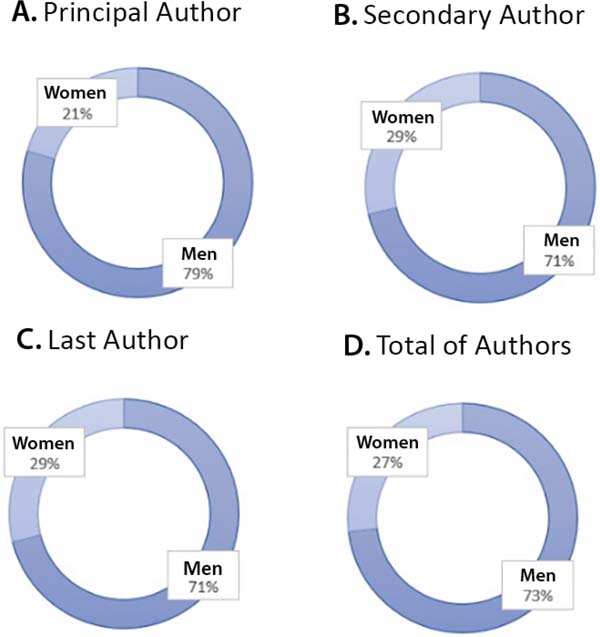
| State | Total | % |
|---|---|---|
| Acre | 0 | 0.0 |
| Alagoas | 5 | 0.5 |
| Amapá | 0 | 0.0 |
| Amazonas | 3 | 0.3 |
| Bahia | 17 | 1.8 |
| Ceará | 55 | 5.9 |
| Distrito Federal | 82 | 8.8 |
| Espírito Santo | 2 | 0.2 |
| Goiás | 15 | 1.7 |
| Maranhão | 0 | 0.0 |
| Mato Grosso | 0 | 0.0 |
| Mato Grosso do Sul | 24 | 2.6 |
| Minas Gerais | 97 | 10.4 |
| Pará | 9 | 0.9 |
| Paraíba | 2 | 0.2 |
| Paraná | 40 | 4.3 |
| Pernambuco | 30 | 3.3 |
| Piauí | 1 | 0.1 |
| Rio de Janeiro | 100 | 10.7 |
| Rio Grande do Norte | 3 | 0.3 |
| Rio Grande do Sul | 65 | 7 |
| Rondônia | 1 | 0.1 |
| Roraima | 0 | 0.0 |
| Santa Catarina | 23 | 2.5 |
| São Paulo | 335 | 36.1 |
| Sergipe | 4 | 0.4 |
| Tocantins | 0 | 0.0 |
Institutions linked to DESC also provide non-capital cities with many scientific productions. Among the 20 municipalities that published the most in the period analyzed were Campinas, Santos, São José do Rio Preto, Ribeirão Preto, Juiz de Fora and Niterói (Table 2).
| Cities | Articles |
|---|---|
| São Paulo/SP | 197 |
| Rio de Janeiro/RJ | 91 |
| Brasília/DF | 81 |
| Fortaleza/CE | 53 |
| Porto Alegre/RS | 52 |
| Belo Horizonte/MG | 51 |
| Campinas/SP | 40 |
| Curitiba/PR | 30 |
| Recife/PE | 27 |
| Campo Grande/MS | 24 |
| Santos/SP | 20 |
| São José do Rio Preto/SP | 20 |
| Juiz de Fora/MG | 15 |
| Goiânia/GO | 14 |
| Ribeirão Preto/SP | 14 |
| Salvador/BA | 14 |
| Florianópolis/SC | 11 |
| Niterói/RJ | 9 |
SP: São Paulo; RJ: Rio de Janeiro; DF: Distrito Federal; CE: Ceará; RS: Rio Grande do Sul; MG: Minas Gerais; PR: Paraná; PE: Pernambuco; MS: Mato Grosso do Sul; GO: Goiás; BA: Bahia; SC: Santa Catarina.
One of the pillars of training residents is participation in the institution’s scientific production, which should be encouraged. Denadai et al. (2018)20 demonstrated that formal training in scientific production increased the publication of articles per resident, the quality of studies, and the journals in which they were accepted. Residents also acquire the skills to carry out bibliographic reviews and search, the discipline for scientific production, and understand their role in improving the service in which they are allocated18.
RBCP does not divide or inform the plastic subspecialties to which the published article belongs. The divisions in this work refer to international articles that carried out similar research. The most frequently published area was cosmetic surgery. This data may reflect the more significant part of plastic surgeons dedicated to this area, the greater dissemination and the greater interest of residents in training17,21-23.
Upper limb/nerve reconstruction was the area with the least publication. The lack of contact during training and the lesser participation of plastic surgeons in the hand surgery subspecialty is a worldwide phenomenon, and this can be seen in the number of articles produced24. In the area of burns, one of the factors that can explain the low number of publications is the existence of a national journal dedicated to this topic25. The article has limitations. Despite the bibliometric character, we did not analyze the type of study and the level of evidence of the articles. The study was descriptive and without comparison between periods.
CONCLUSION
The data presented in this article allow a descriptive analysis of the RBCP. There is a need to intensify the publication of original articles to discuss the search for gender equality in publications. Resident training institutions play an important role in national scientific production, and scientific participation during training has to be encouraged.
REFERENCES
1. Denadai R, Goldenberg D, Raposo-do-Amaral CE. Análise bibliométrica dos artigos publicados na revista brasileira de cirurgia plástica entre 2005 e 2012. Parte I: análise quantitativa de artigos, autores e distribuição geográfica. Rev Bras Cir Plást. 2014;29(1):2-9.
2. Goldenberg D, Baroudi R. Novas regras da Revista Brasileira de Cirurgia Plástica - RBCP. Rev Bras Cir Plást. 2015;30(1):1.
3. Revista Brasileira de Cirurgia Plástica (RBCP). Estatística [Internet]. São Paulo: RBCP; 2021; [acesso em 2021 Fev 02]. Disponível em: http://www.rbcp.org.br/statistics-journal
4. Denadai R, Goldenberg D, Raposo-do-Amaral CE. Análise bibliométrica dos artigos publicados na revista brasileira de cirurgia plástica entre 2005 e 2012. Parte II: serviços de origem, apresentações prévias e tipos de artigos. Rev Bras Cir Plást. 2014;29(1):10-7.
5. Denadai R, Goldenberg D, Raposo-do-Amaral CE. Análise bibliométrica dos artigos publicados na revista brasileira de cirurgia plástica entre 2005 e 2012. Parte III: desenhos de estudo e níveis de evidência. Rev Bras Cir Plást. 2014;29(1):18-29.
6. Arruda FCF, Paula PRS. Publicação dos residentes de cirurgia plástica em serviços credenciados - análise comparativa de 10 anos. Rev Bras Cir Plást. 2015;30(3):398- 402.
7. Goldenberg S. Acta cirúrgica brasileira de 2001 a 2005. Acta Cir Bras. 2009 Jan/Fev;24(1):1-2.
8. Ventura AG, Ventura AJ, Santos SA. Evolutive characteristics of the scientific articles published in the “Arquivos Brasileiros de Oftalmologia” between 1986 and the year 2000. Arq Bras Oftalmol. 2008;71(5):711-6.
9. Efanov JI, Shine J, Ghazawi N, Ricard MA, Borsuk DE. Publication rates and author characteristics from 3 plastic surgery journals in 2006 and 2016. Ann Plast Surg. 2018 Ago;81(2):128-36.
10. Mariette C, Piessen G, Robb WB. Publishing in surgery: how and why?. Langenbecks Arch Surg. 2013 Abr;398(4):587-93.
11. Goldenberg D, Baroudi R. Artigos originais versus relatos de caso. Hierarquia dos níveis de evidência científica. Rev Bras Cir Plást. 2011;26(3):378.
12. Andry D, Moliver C, Phillips LG. An analysis of female plastic surgery authorship: where are we today?. Plast Reconstr Surg. 2019 Jan;143(1):327-31.
13. Camargo JRF, Hayashi MCPI. Coautoria e participação feminina em periódicos Brasileiros da área de cirurgia: estudo bibliométrico. Rev Digital Biblioteca Ciênc Informação. 2017 Jan/Abr;15(1):148-70.
14. Hiller KP, Boulos A, Tran MM, Cruz Junior AI. What are the rates and trends of women authors in three high-impact orthopaedic journals from 2006-2017?. Clin Orthop Relat Res. 2020 Jul;478(7):1553-60.
15. Farooq A, Sahara K, Muneeb A, Farooq K, Tsilimigras DI, Merath K, et al. Analysis of authorship in hepatopancreaticobiliary surgery: women remain underrepresented. J Gastrointest Surg. 2020 Set;24(9):2070-6.
16. Scheffer M; Conselho Federal de Medicina (CFM). Demografia médica no Brasil 2020. São Paulo: Faculdade de Medicina da Universidade de São Paulo (FMUSP)/CFM; 2020.
17. Vanz RI, Perondi F, Boechat CJ. Análise dos serviços de Cirurgia Plástica da Sociedade Brasileira de Cirurgia Plástica sob o ponto de vista dos cirurgiões do último ano do curso de especialização em cirurgia plástica. Rev Bras Cir Plást. 2019;34(2):250-9.
18. Souza JGS, Popoff DAV, Oliveira RCN, Almeida ER, Martelli Junior H, Lima AMEB. Profile and scientific production of Brazilian researchers in dentistry. Arq Odontol. 2016 Jan/Mar;52(1):13-22.
19. Sidone OJG, Haddad EA, Mena-Chalco JP. A ciência nas regiões brasileiras: evolução da produção e das redes de colaboração científica. Transinformação. 2016;28(1):15-31.
20. Denadai R, Raposo-do-Amaral CA, Ghizoni E, Buzzo CI, Raposo-Do-Amaral CE. O treinamento formal em pesquisa científica aumenta a participação de residentes de cirurgia plástica em artigos revisados por pares. Rev Bras Cir Plást. 2018;33(4):553-61.
21. Batista KT, Pacheco LMS, Silva LM. Avaliação dos programas de residência médica em cirurgia plástica no Distrito Federal. Rev Bras Cir Plást. 2013;28(1):20-8.
22. Lima DSC, Mata FSR, Oliveira FCC, Zenaide PV, Ziomkowski AA, Meneses JVL. A cirurgia plástica na mídia: o conceito da especialidade veiculado pelos meios de comunicação impressos no Brasil. Rev Bras Cir Plást. 2015;30(1):93-100.
23. Batista BN. State of plastic surgery in Brazil. Plast Reconstr Surg Glob Open. 2017 Dez;5(12):e1627. DOI: https://doi.org/10.1097/GOX.0000000000001627
24. Denadai R, Samartine Junior H, Denadai R, Pinho AS, Raposo-do-Amaral CE. A cirurgia de mão como uma área de atuação dos cirurgiões plásticos. Rev Bras Cir Plást. 2015;30(3):408-12.
25. Schiozer W. Editorial. Rev Bras Queimaduras. 2010;9(1):1.
1. Paulista State University, Faculty of Medicine
of Botucatu, Botucatu, SP, Brazil.
MSS Analysis and/or data interpretation, Conception and design study, Data Curation, Final manuscript approval, Methodology, Project Administration, Supervision, Visualization, Writing - Original Draft Preparation, Writing - Review & Editing.
IDS Analysis and/or data interpretation, Data Curation, Methodology, Writing - Original Draft Preparation.
MMC Analysis and/or data interpretation, Data Curation, Writing - Original Draft Preparation.
ABPMO Data Curation, Methodology, Writing - Original Draft Preparation.
BFMN Writing - Original Draft Preparation, Writing - Review & Editing
Corresponding author: Murilo Sgarbi Secanho, Rua, Avenida Professor Mário Rubens Guimarães Montenegro, Unesp Campus de Botucatu, Botucatu, SP, Brasil., CEP: 18618-687, E-mail: murilo_sgs@hotmail.com
Article received: February 08, 2021.
Article accepted: April 19, 2021.
Conflicts of interest: none.
Institution: Paulista State University, Faculty of Medicine of Botucatu, Botucatu, SP, Brazil.



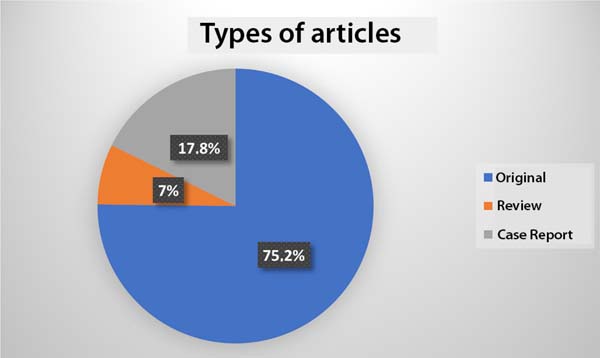


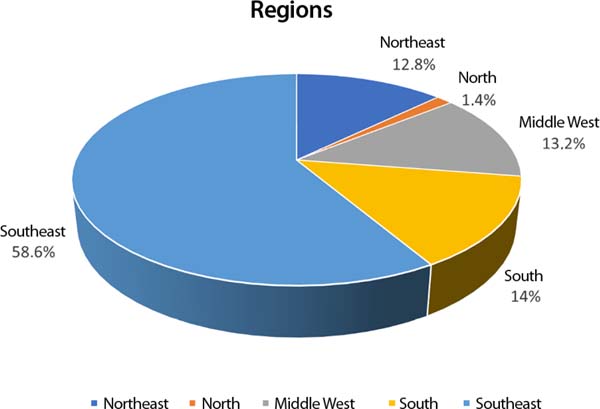

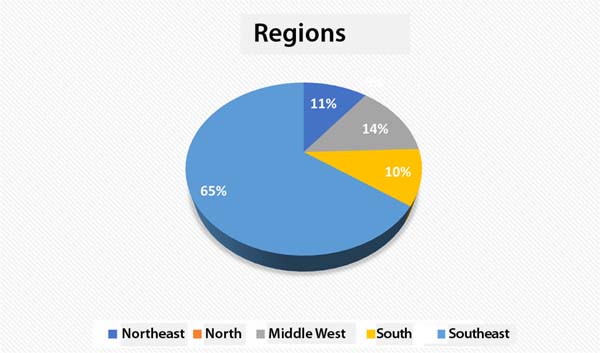



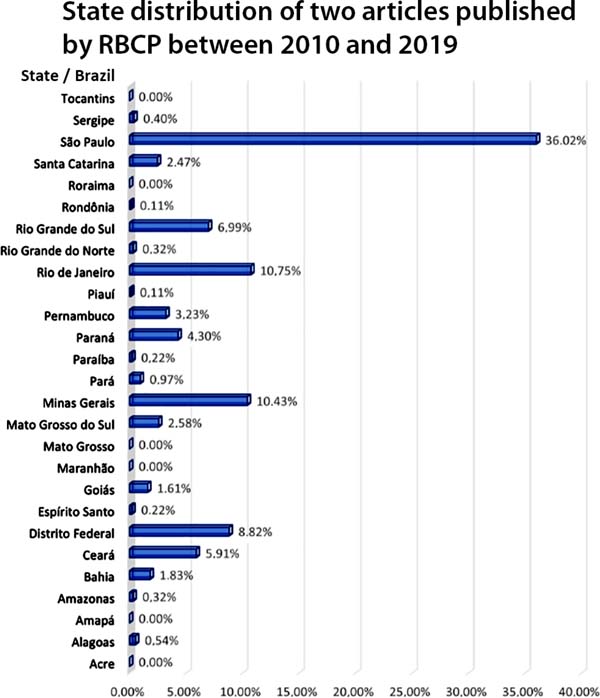

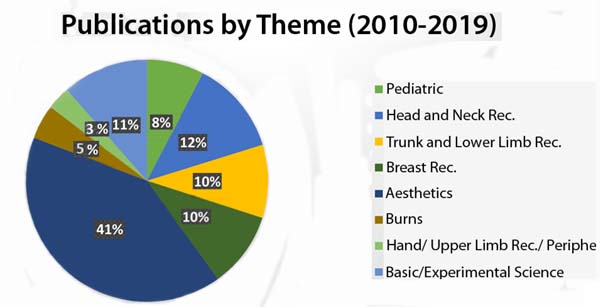

 Read in Portuguese
Read in Portuguese
 Read in English
Read in English
 PDF PT
PDF PT
 Print
Print
 Send this article by email
Send this article by email
 How to Cite
How to Cite
 Mendeley
Mendeley
 Pocket
Pocket
 Twitter
Twitter